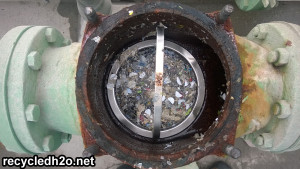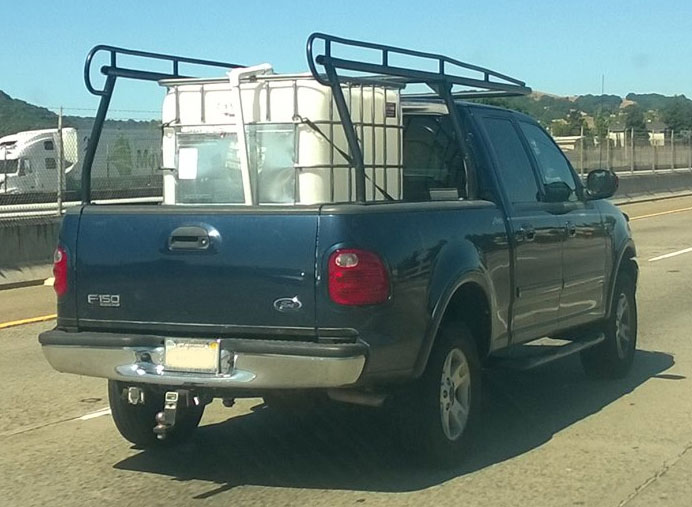 You go to the store and pick out the most delicious looking tomato. The clerk scans its’ barcode and you take it home. When you’re ready to eat it, you wash it in the sink and that little barcode comes flying off and right down the drain it goes. You think nothing of it. “Out of sight, out of mind.”
You go to the store and pick out the most delicious looking tomato. The clerk scans its’ barcode and you take it home. When you’re ready to eat it, you wash it in the sink and that little barcode comes flying off and right down the drain it goes. You think nothing of it. “Out of sight, out of mind.”
Except that sticker/label went somewhere. In most cases, it will travel through miles of underground pipe, making its way to a wastewater treatment plant where it will go from tank to tank through various pipes and eventually the water it’s floating in will be clean enough to be dumped into a river or bay and eventually, it will end up in the ocean.
I am an operator at a Wastewater Treatment Plant and I constantly come across these little food stickers during my day. Wastewater treatment plants will reuse some of the water they discharge as process water. There is equipment in place to screen out those little plastic labels (and other trash still present in the water) before they plug other machinery whose operation is vital to the functioning of a treatment plant.
The picture above is one such screening device. A large 18″ deep, 6″ wide basket strainer catches plastic before the water is used as surface sprays. Last week, I cleaned out 4 of these strainers and this is what I pulled out. (Everything you see here would have ended up in the ocean.)
I dug through this plastic heap and found an part of a Cheeto’s bag, jolly rancher candy wrappers, used condoms (albeit now shredded) and plenty of fruit/vegetable stickers. All this trash should have never gone down the drain in the first place. We need to stop our practice of “out of sight out of mind” and change our actions of using the drain as our personal trash can.
Whether you’re on a septic tank or a municipal sewer system, you should not put trash in the toilet, sink or drain.
First – we can educate the public about the issues and hope they will listen by stopping the practice. The wastewater industry may get some people to stop, but most won’t even take notice.
Whether we create a Twitter/Instagram/Facebook/insert social media platform of choice – campaign about fruit label disposal, there will be no reward besides that ‘feel good’ feeling about being “environmental stewards” in our homes.
Second – the general public could complain that wastewater treatment plants aren’t cleaning the plastics from the water and encourage the federal government to change regulations. Except that will end up costing the public more because they will pay for the upgrades to the treatment plant to remove the plastics which they put there in the first place.
Or the third option – do nothing about it. Continue letting the trash flow into the receiving waterway.
But how is this acceptable? As a part of an agencies National Pollution Discharge Elimination System (NPDES) permit, it says that as long as you can’t physically see the plastics in the water that the effluent is dumped into, there is no violation of the permit. See A.1 “Floating, suspended or deposited macroscopic particulate matter or foams;”.
Every month, lab personnel go out in a boat around the outfall line (where the treated wastewater discharges) and take water samples and do visual inspections, as required by the discharge permit.
There are many treatment plants in the region and around the world. The issues with plastics that I came across is a chronic problem, not acute. It happens at every treatment plant (unless they already have the technology in place to handle it). Some facilities must remove the plastics all together, as it will plug up their downstream processes.
We as a society have the power to stop the practice of using the drain as a trash can. We have the ability to make the change in our lives. Let’s start this Pollution Prevention week with taking note about the things we put down the drain and ensure when its solid waste to keep it only #2’s and toilet paper. Nothing else.
Do you need help on understanding what is ok to flush? Check out this page from the California Water Environment Association for help.







Leave a Reply